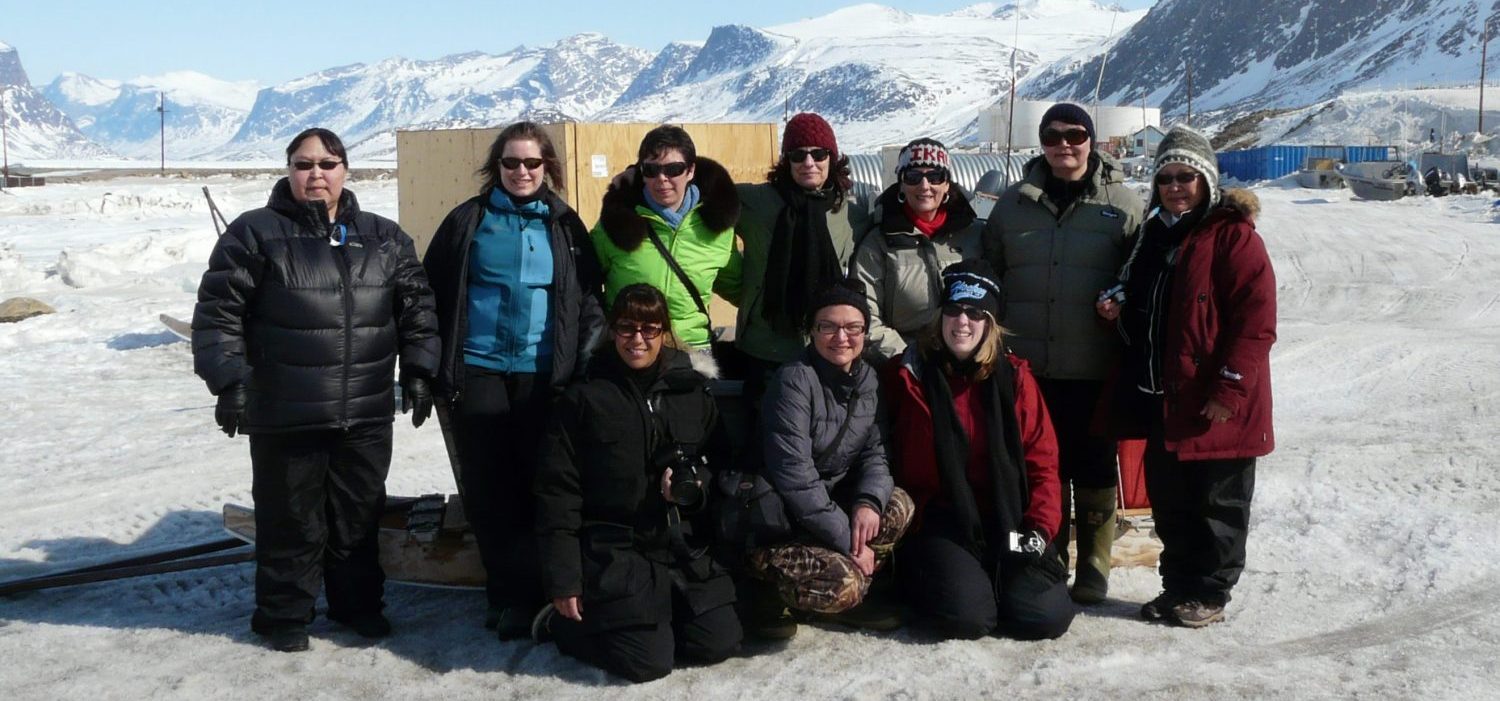Nunavut Pilgrim

How does a white woman from down south dare go to Nunavut as a “teacher”? And does she do it with respect?
About 10 years ago I had the great good fortune to travel to Nunavut to facilitate a long-term training program for Nunavut-based Career Development practitioners.
Let me tell you that I was “green.” All I knew about Nunavut was that it was big and it was cold. All I knew about the Inuit culture was the prints and sculptures I saw in art stores in Vancouver’s Gastown that I couldn’t afford to shop in.
I tried to prepare myself by reading everything I could find on the Internet. Did this prepare me? No! Not in the slightest. It’s like the difference between having a map and then actually having to find your way home after being dropped in the desert. You possess a few abstract generalizations that don’t translate to reality.
So, what was a middle-aged, (I lie. I’m older.) non-Inuit woman from down south to do when it’s your first time in Iqaluit, it’s -45 and you have just had the realization when walking to the Northern grocery store that the weather can literally kill you?
I knew from traveling and working internationally that it was important to understand and acknowledge that I was only a few degrees away from being a nitwit. I really didn’t have a clue – not even enough to know what the right questions were. I was back in elementary school and I may have had the title “instructor” but I was the one that really needed schooling. I also knew that the Inuit participants attending the courses I was delivering were my biggest and best source of this learning.
So in the very first class, I asked for their help. I let them know I was as nervous as they were. If we were going to get through this together we needed to help each other out. I was going to say really stupid stuff that made no sense to them and they had to tell me when I did it and why it was not making sense. I was going to ask them lots of strange, maybe obvious questions, not because I was testing them but because I really didn’t know the answers. I am a talker by nature so I am sure those first few courses we had together I asked a lot of questions that I later laughingly referred to as “dumb speak.”
Can I just say that the Inuit learners were welcoming, honest, generous, respectful, humble and ready to laugh. Actually, humour became a key – that and loving relationships. They were ready to love me because I already loved them and we were all willing to laugh at and with each other. So we found our way together. These learners were all adults working in their own culture and their own communities. They were living full, vibrant lives and had a gold mine of knowledge and wisdom they were willing to share not only in their stories but in their silences. I just had to learn how to listen.
I got to travel to Nunavut many times and I got to work with many of the same participants for several years. We learned a lot about each other as people and practitioners. We soon shed our assigned “roles” of “teacher” and “ students;” we became a community of learners and more importantly a community of practice. We were people with a shared profession, Career Development, and the Nunavut practitioners had a great deal to contribute to my understanding of my chosen field. I started this blog with a question of about how I was going to approach working with these practitioners “with respect” for their land, their culture and their experiences. What I came away with are these guiding principles:
- Know that I don’t know
- Take time to build caring relationships
- Ask questions in the spirit of helping you understand when you are being a nitwit
- Encourage discussion
- Have a sense of humour and be prepared to laugh at yourself, and
- Most importantly listen! Especially to the silences.
It is my hope that, as Career Development in Canada continues to strengthen and the national conversation about our field continues, the unique voices of our Nunavut colleagues are included and encouraged. And that we all listen.


